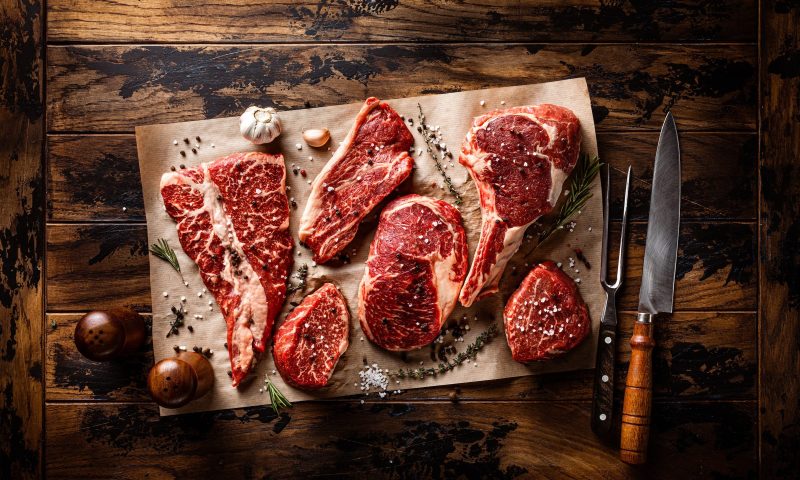Often, when people are describing a particularly delicious meal they’re eating, they’ll say something along the lines of, “It just melts in your mouth.” While this line can, admittedly, be a little bit cringy for those of us who are tired of hearing it, it does describe a certain success within a dish – tenderness. As human beings, we’ve evolved past knawing on raw muscle and bone and crave a succulent meal that does, in fact, taste as though it’s melting away in our mouths. Unless it’s beef jerky at a ball game, we want our meat to be tender. The problem, though, is that some of the most delicious cuts of beef are also the toughest. That’s why it’s important to tenderize steak and other cuts of beef before cooking.
Tenderizing beef is the process of breaking down its connective muscle fibers and tissues, giving that piece of meat a more delicate consistency and delicious flavor. So, how do we accomplish this at home?
How to tenderize steak

Depending on the dish you’re cooking, there are many options when it comes to tenderizing your steak. Many of these methods are wonderful not just for tenderization, but also for adding extra flavor to your dish.
Pounding
Pounding your steak with a meat mallet is a great way to tenderize it. If you’ve ever wondered about the dual side of a meat mallet, each side has a specific purpose. The spiked side creates small indentations in the meat that help break up connective fibers and muscle tissue, thus tenderizing the meat. This is better for red meat, whereas the smooth side of the mallet is better for more delicate meats like chicken or pork. The smooth side is also better for leveling and thinning out a piece of meat so that it will cook more evenly.
Salting
Perhaps the most ancient of tenderizing methods, salting is exactly what it sounds like. In this tenderizing method, meat is salted before cooking so that the chemical can make the meat more tender by breaking down its proteins. Of course, salting the meat before cooking will not only help to tenderize it, but to add flavor as well.
Marinating
Marinating steak is one of the best ways to tenderize and impart flavor into meat. Generally consisting of an acid, an oil, and flavoring agents. Acids can be citrus juices, wine, vinegar, buttermilk, or even soda. The acid in a marinade helps to break down connective tissue and muscle fibers, doing the bulk of the “tenderizing” leg work. The oil component of a marinade penetrates the meat’s surface and helps to keep it moist. Finally, flavoring agents such as herbs and spices will – obviously – help to flavor a dish. These ingredients can always be mixed and experimented with depending on the dish you’re making, provided the three components remain.
For added tenderization in a marinade, you can use a process called enzymatic application, which adds additional tenderizing enzymes in the form of certain fruits. Ingredients like papaya, pineapple, Asian pears, and kiwi contain these added enzymes that will further assist in breaking down meat’s connective tissues. Use caution with these ingredients, though, as they are so effective that, if left to marinate too long, can make the meat mushy. When using enzymatic application, it’s best to only marinate meat for – at most – 12 hours.
Velveting
This Chinese method of marinating meat is also a delicious way to promote even browning and create a surface that sauces will more easily adhere to. Velveting is the process of creating a cornstarch-based slurry prior to cooking that’s mixed with flavoring agents like rice vinegar or oyster sauce. Sliced pieces of meat are coated in this slurry before being cooked, and the result is deliciously tender.
Slow Cooking
Low and slow cooking is one of the most popular forms of tenderizing meat. Any melt-in-your-mouth pot roast or savory beef stew is often the result of being slow-cooked. This slow process releases collagen and breaks down the connective tissues in beef, resulting in those deliciously tender, warm and comforting dishes we all love when the weather gets cold.
Scoring
Scoring meat is yet another dual-purpose tenderizing method. Not only is this a great way to make meat more tender, but it also helps to get flavor inside more easily. To score steak (or any protein), simply cut shallow slits into its surface. This will both sever the connective fibers and create a convenient place to add extra flavor in the form of oils, butter, herbs, and spices.
Steaks that should be tenderized

Tougher cuts of beef tend to come from the parts of the cow that are most used and worked by the animal. Muscular areas like the shoulder or leg tend to be tougher but also the most flavorful. By tenderizing these tougher cuts, these flavorful pieces can be not only tasty but beautifully tender and supple as well. The following cuts tend to be tough but delicious and respond extremely well to tenderization.
- Brisket
- Bottom round
- Chuck
- Flank steak
- Hanger steak
- London Broil
- Tri-tip steak
- Skirt steak
- Shank




